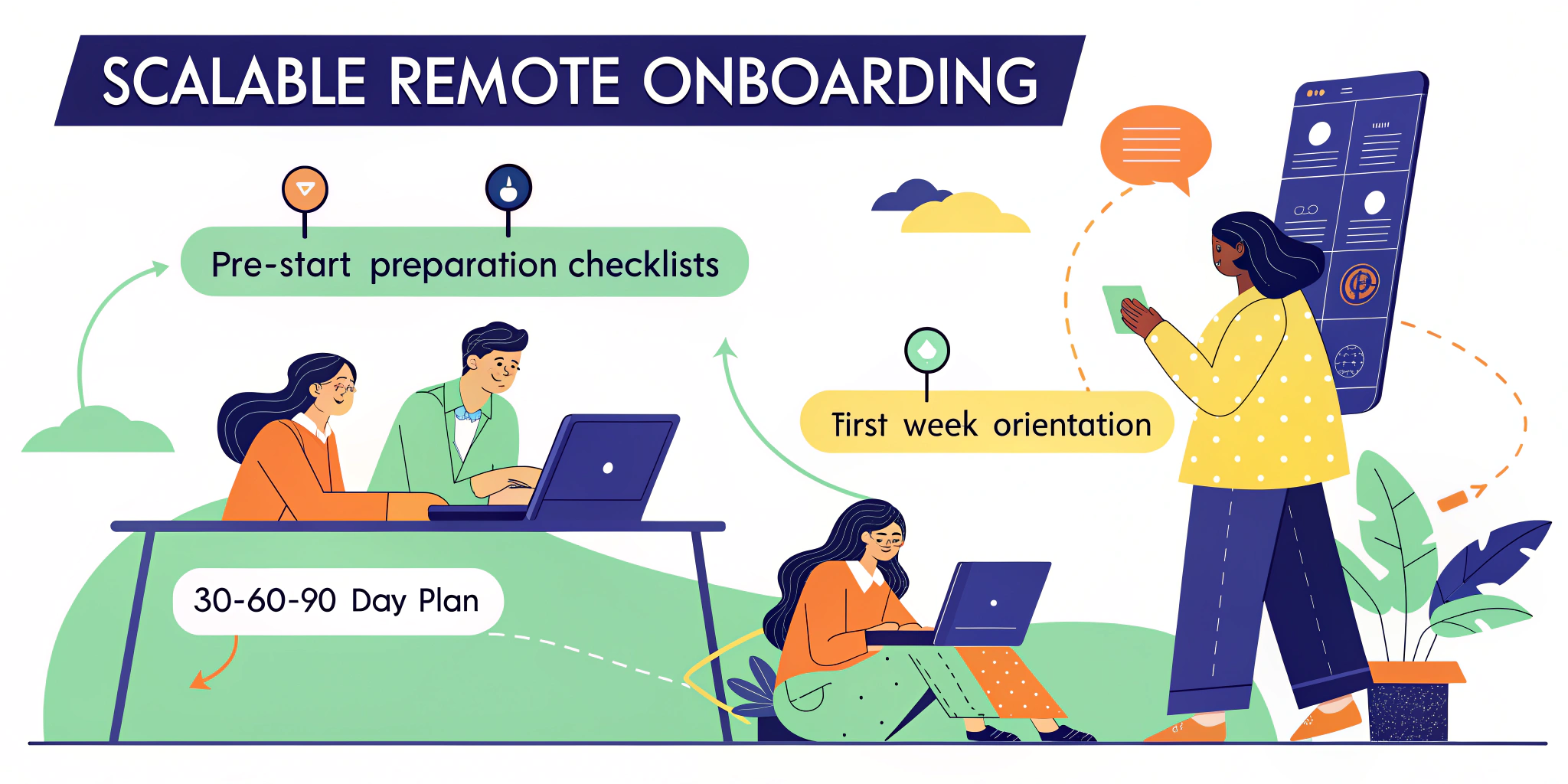How to Build a Scalable Remote Onboarding Process
· 16 min read

Listen to the deep dive conversation:
Remote onboarding is critical as more workplaces shift to remote work. Here's what you need to know to create a scalable process that boosts productivity and retention:
- Why It Matters: 22% of the workforce will work remotely by 2025, and poor onboarding leads 20% of new hires to leave within 45 days. A structured process can improve productivity by 70% and retention by 82%.
- Key Components:
- Automation: Streamline repetitive tasks like document management and compliance tracking.
- Self-Service Resources: Provide a central knowledge base, technical guides, and role-specific materials.
- Standardised Templates: Use checklists, milestone trackers, and communication templates for consistency.
- 4 Stages of Onboarding:
- Pre-Start: Prepare equipment, software access, and welcome materials before day one.
- Week 1: Focus on orientation, team introductions, and early check-ins.
- 30-60-90 Day Plan: Gradually transition hires from learning to independent contributions.
- Continuous Feedback: Regularly gather feedback and refine the process.
- Tools to Use: Platforms like BambooHR (AU$6.19/user/month) and Gusto (AU$49/month + AU$6/user) automate workflows, while communication tools like Microsoft Teams and Guru improve collaboration and access to information.
- Measure Success: Track metrics like time-to-productivity, retention rates, and new hire satisfaction to evaluate and improve the process.
A scalable onboarding process combines automation, clear resources, and regular feedback to ensure remote hires feel connected and productive from day one.
